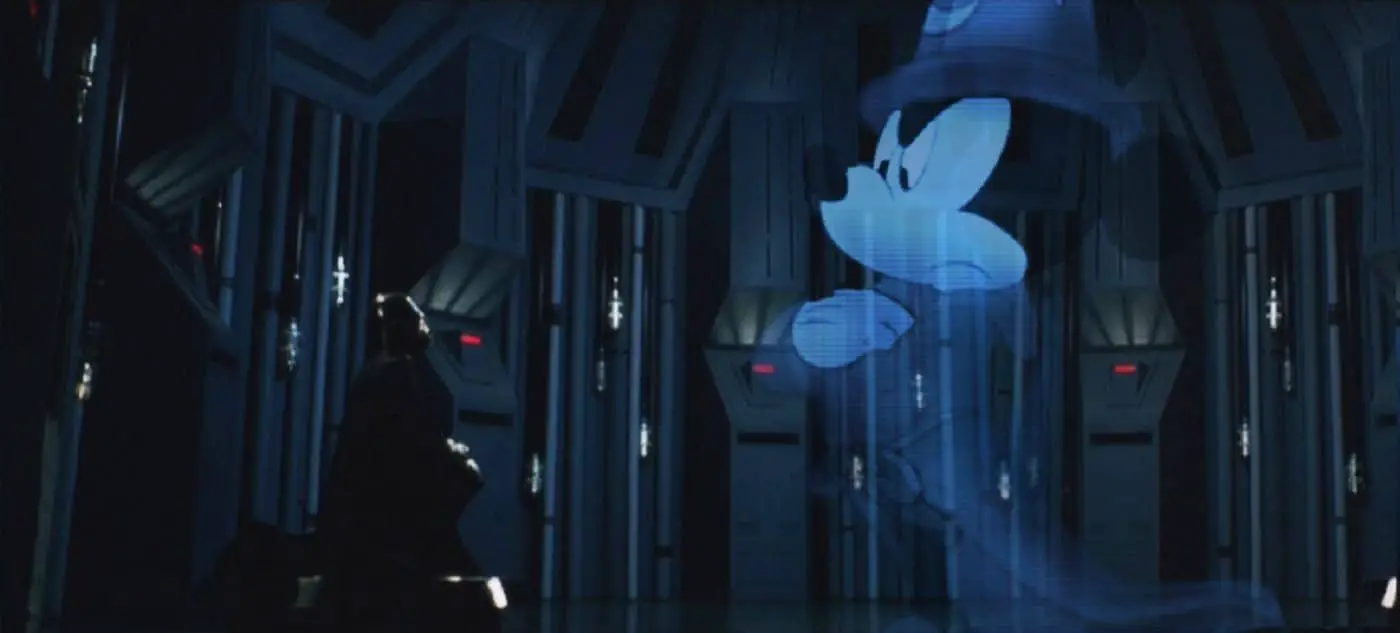[dropcap size=big]O[/dropcap]n October 30, 2012, five years ago last week, the Walt Disney Co. made three shocking announcements: that it had purchased Lucasfilm for over $4 billion, that it was going to make new Star Wars movies, and that Star Wars creator George Lucas was retiring from active participation in the series.
The news, coming after Disney’s similar purchases of Marvel Entertainment and Pixar Animation Studios, has had a major effect (both good and bad) on the movie business and wider popular culture in the first five years of the deal.
Return to the Galaxy Far Far Away
The Disney/Lucasfilm deal has mostly been a huge positive for one simple reason; Star Wars is once again central to American popular culture, in a way it hadn’t been in a long time.
There’s a new Star Wars movie every year, little kids – and even some adults – have a new generation of Star Wars toys to play with and t-shirts to wear, and beyond that, Star Wars has all but taken over the Disney theme parks. Star Wars characters are a regular feature at sporting events, with just about every major and minor league baseball team hosting Star Wars Nights, and there’s the new annual tradition of a Star Wars trailer debuting at halftime of an October Monday Night Football game.
Soon after the Disney deal, the company laid out how it planned on bringing back the franchise — a new trilogy consisting of Episodes VII, VIII and IX, where they’d combine the classic characters of the original trilogy with a group of new, younger characters. And in between those feature years they’d introduce “standalone” movies about various corners of the Star Wars universe and mythos (i.e. Rogue One and the forthcoming Han Solo film).
Sure, the first two movies weren’t universally beloved. But they certainly left a better taste in the mouths of most Star Wars fans than the mostly-derided prequels had a generation earlier.
The first new Star Wars movie of the Disney era, Star Wars: The Force Awakens, arrived in theaters in December of 2015. Directed by JJ Abrams, the film very closely followed the template of the original Star Wars film, but did so in a way that was exciting and at times exhilarating, with four or five truly magical movie moments. The casting of the new characters was impeccable, including the relatively unknown Daisy Ridley in the pivotal role of Rey and Adam Driver as Kylo Ren, the plausible heir to Darth Vader. Even with some grumbling that the structure wasn’t original, the film was well-received, breaking the record for the highest-grossing film in the history of the U.S. domestic box office.
The following year they introduced the saga’s first standalone film, Rogue One: A Star Wars Story. While not quite as exhilarating as The Force Awakens, Rogue One was a much darker treatment of the period immediately before Episode IV, with a plot centered on the theft of the Death Star plans, and a diverse cast of doomed heroes. Rogue One also gave Star Wars fans something they hadn’t experienced in decades – an in-his-prime Darth Vader.
Sure, the first two movies weren’t universally beloved. But they certainly left a better taste in the mouths of most Star Wars fans than the mostly-derided prequels had a generation earlier. Episode VIII, titled Star Wars: The Last Jedi and directed by the highly-regarded Rian Johnson, is set for release in December.
Meanwhile, in Orlando…
Clearly, the purchase of Star Wars was about more than just making movies. Disney took control of a staggering amount of intellectual property, from characters to technologies to the rights to toy lines and video games, all of which is unimaginably lucrative.
A trip to Walt Disney World this past spring led to a shocking discovery: Disney is now nearly as much about Darth Vader as it is Mickey Mouse, Goofy, or Cinderella.
My kids and their cousins went on the Star Tours ride, took Jedi training, and passed Storm Troopers walking around roughly every 15 minutes. And this is even before the scheduled 2019 opening of the dedicated “Star Wars: Galaxy’s Edge” area, both at Disney World and Disneyland. And that’s to say nothing of a series of new annual and semi-annual events: Star Wars Day (May the 4th), the Star Wars Celebration, and Force Friday, as well as regular Star Wars Nights at sporting events.
Clearly, the purchase of Star Wars was about more than just making movies. Disney took control of a staggering amount of intellectual property, from characters to technologies to the rights to toy lines and video games, all of which is unimaginably lucrative. There’s even a Chewbaccpack.
While the Disney takeover of Star Wars has been mostly a creative success, it’s unquestionably been a financial one as well.
The downside
What’s gone wrong with Star Wars in the Disney era? Well, one constant has been a surprising amount of turmoil behind the scenes, as more of the Disney-era Star Wars films have fired their directors than not.
Behind-the-scenes turmoil doesn’t always bode poorly for movies…But the personnel shifts aren’t always a great sign, either…
Director Josh Trank, of the ill-fated Fantastic Four film, was fired during pre-production from a standalone film that was ultimately never made. Rogue One had major reshoots, in which director Gareth Edwards was reportedly undermined. Phil Lord and Christopher Miller, were fired deep into the production of the Han Solo standalone film, and replaced by Ron Howard. Not long after, Colin Trevorrow was dropped from directing Episode IX, and replaced by Force Awakens director J.J. Abrams. And on top of that, more than one of the films, including Force Awakens, have replaced their writers.
Behind-the-scenes turmoil doesn’t always bode poorly for movies; Pixar, for instance, has a long history of replacing directors in the middle of production, even on some of its more successful films. But the personnel shifts aren’t always a great sign, either, especially considering that Lord and Miller’s work in the past decade or so has been vastly superior to the unwatchable Da Vinci Code sequels Howard has been churning out.
The bad fan problem
Both Force Awakens and Rogue One were subject to ugly social media trolling campaigns related to the racial and ethnic diversity of their casts…
Of course, Star Wars hasn’t been immune to some of the darker aspects of fandom that have reared their ugly head in recent years. Both Force Awakens and Rogue One were subject to ugly social media trolling campaigns related to the racial and ethnic diversity of their casts, with some overzealous trolls making up that Rogue One had been changed in re-shoots to make it more anti-Trump. There’s also the usual grumbling from those who object to the inclusion of cute characters, as though these movies hadn’t been for children all along.
There’s one other concern – Will the market become oversaturated with Star Wars? Will Star Wars still be special if the movies come out so frequently? What happens when there aren’t any good ideas left?
At any rate, the return of Star Wars has been welcome, and not only because there isn’t a Jar Jar Binks in sight. It’s just plain better to have Star Wars in our lives than not.




